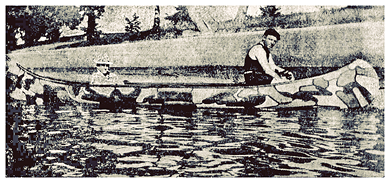 |
| Monograph on Walter Tandy Murch (2021) |
His work has the seemingly effortless charm of collages and assemblages, in which familiar components are recognizable—up to a point—yet disarmingly strange and beclouded. His paintings are not collages of course. They are unforced yet purposeful patterns of paint. The mystery that they induce comes partly from the struggle between the clarity of the thing portrayed—a bowler hat, gears and scientific tools, the backside of a manikin—and a half-rhyming, impending surrounding that threatens to merge. But it doesn’t.
Murch’s very finest works traverse a tight rope on the cusp of genuinely excellent gallery art (not easily found at the moment) and the best magazine illustration. Somehow he excelled at both, and we should not be surprised to find that his work remains formidable whether mounted on a gallery wall, or printed in full color on a magazine cover. Among his most powerful paintings are works that were commissioned as illustrations for the covers of Fortune Magazine and Scientific American.
 |
| Walter Tandy Murch / Cover Illustration |
While he was always prolific, Murch was never widely known, perhaps in part because he dared to be a “fine artist” when exhibiting at the Betty Parsons Gallery, and yet to apply the very same skills in illustration, advertising, graphic design, restaurant murals, the design of department store windows, and teaching. He lived for only sixty years. In the year before he died, his work was exhibited in a major retrospective at the Rhode Island School of Design. In 2021, Rizzoli USA published a full-color book about his life and work, titled Walter Tandy Murch: Paintings and Drawings, 1925-1967. At the top of this post is the cover.
 |
| Walter Tandy Murch / painting |
RELATED LINKS
Dazzle Camouflage: What is it and how did it work?
Art, Women's Rights, and Camouflage
Embedded Figures, Art, and Camouflage








